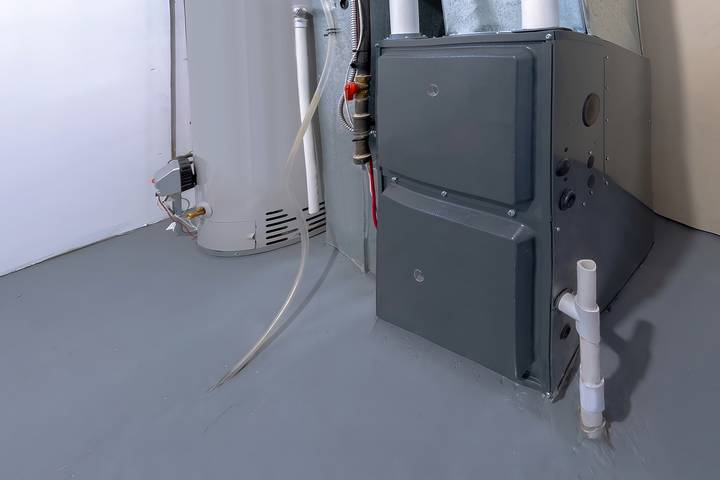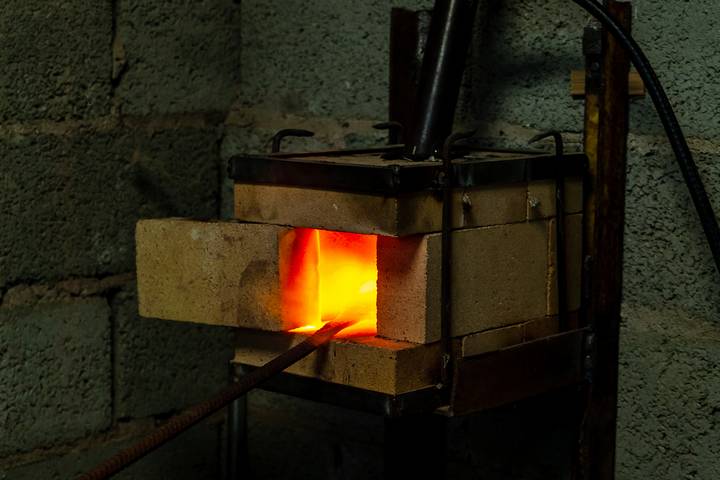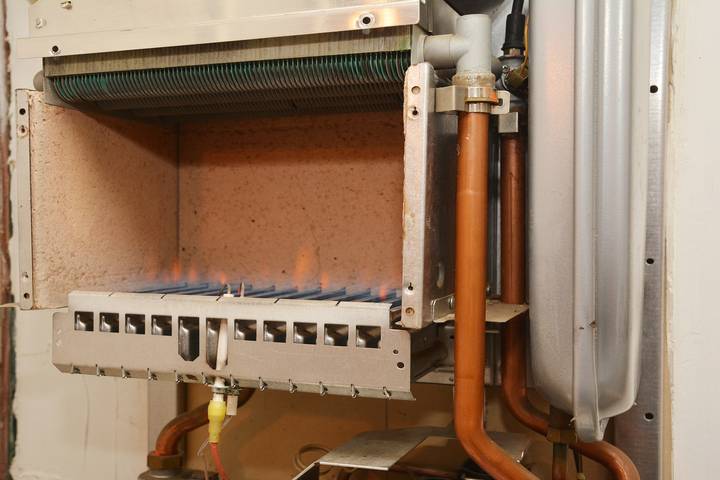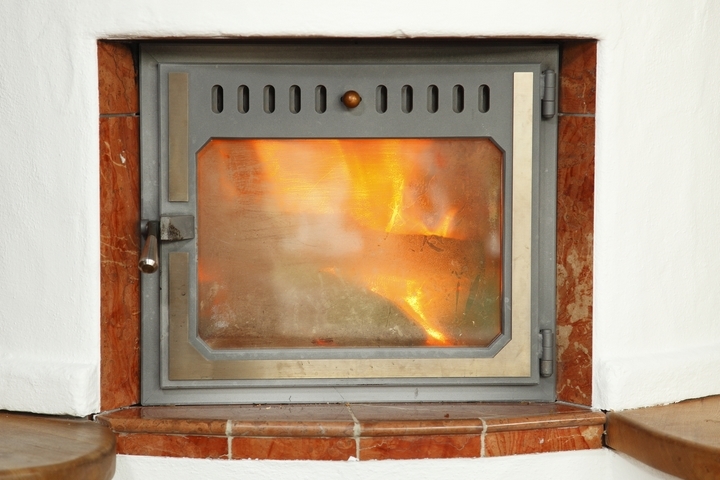While I have listed six types of gas furnaces in this article, the three main ones are single-stage, two-stage and modulating furnaces. Among factors to consider when buying a gas furnace include fuel efficiency, price and environmental conservation.
It’s important to note that you should choose a gas furnace ideal for the kind of weather you are in. In extremely cold weather, you need a furnace you can depend on, one that rarely breaks down. Consider a gas furnace that convert lost energy, such as the last two described below. A great benefit of gas furnaces is that they are also the cleanest, especially those running on natural gas.
Below are six types of gas furnaces for heating your home.
Type #1: Single-stage furnaces
 This type of gas furnaces has a single-stage heat output. It runs at full capacity, even in the coldest weather. While it is not as efficient as other types of furnaces since it works at full throttle whenever it’s on, it produces a maximum amount of heat, which will effectively keep your home and family warm.
This type of gas furnaces has a single-stage heat output. It runs at full capacity, even in the coldest weather. While it is not as efficient as other types of furnaces since it works at full throttle whenever it’s on, it produces a maximum amount of heat, which will effectively keep your home and family warm.
It has an “on” and “off’ speed, but nothing in between. So, it’s either off or on; and you can’t modulate the heat to medium, low, or otherwise. For this reason, it’s ideal in very cold weather where outside temperatures are below the freezing point.
Type #2: Two-stage furnaces
 Unlike the one-stage furnace, this furnace type is more efficient. The first stage, which runs at between 65% and 70% furnace capacity, is “on” most of the time. If the outdoor temperatures are cold, the first stage setting is not enough to heat your home. This is when the second stage switches on to add additional heat to your home.
Unlike the one-stage furnace, this furnace type is more efficient. The first stage, which runs at between 65% and 70% furnace capacity, is “on” most of the time. If the outdoor temperatures are cold, the first stage setting is not enough to heat your home. This is when the second stage switches on to add additional heat to your home.
The beauty of a two-stage furnace is that it provides your home with just the appropriate amount of heat. Besides, the fact that it does not run at 100% (unlike the single-stage furnace) means it is quieter and emits less carbon dioxide into the environment.
Type #3: Modulating furnaces
 Take the two-stage furnace and expand it to allow several heat output settings, and you have a modulating furnace. Your home needs more heat when it’s cold outside. A modulating furnace adjusts accordingly by incrementally raising heat output by 1% or more.
Take the two-stage furnace and expand it to allow several heat output settings, and you have a modulating furnace. Your home needs more heat when it’s cold outside. A modulating furnace adjusts accordingly by incrementally raising heat output by 1% or more.
These furnaces normally operate at between 35% and 100% capacity. By regularly controlling the fuel consumption using a thermostat, you can keep temperatures to about 0.5 degrees of the thermostat’s setting throughout the home. Besides, since the gas and fan burner rarely run at full capacity at the same time, you can get rid of the on/off cycling found in a standard furnace. As a result, modulating furnaces are the most fuel-efficient in the market today.
Type #4: Natural gas furnaces
 Several benefits accrue from furnaces using natural gas to heat a home. These types of furnaces are fairly affordable and easy to maintain since they rarely break down. However, when they do, repairing them is relatively inexpensive. You won’t need to replace them or pay too much for needed repairs.
Several benefits accrue from furnaces using natural gas to heat a home. These types of furnaces are fairly affordable and easy to maintain since they rarely break down. However, when they do, repairing them is relatively inexpensive. You won’t need to replace them or pay too much for needed repairs.
Natural gas is the cheapest among fossil fuels. Therefore, a furnace running on natural gas significantly slashes your monthly utility bills. Besides, natural gas is extremely clean and therefore very friendly to the environment. You can sleep easy knowing you are not polluting the environment every time you run your furnace.
Apart from the fact that natural gas is inexpensive, it is also extremely efficient. It also produces the most heat, which means you only have to use a limited amount of gas to heat your home. Besides being highly reliable and efficient.
Type #5: The 80% gas furnaces
 These gas furnaces are the most commonly found in older homes with chimney vents. The 80% furnace exhausts 20% of the produced heat via the furnace vent. This type of furnace delivers an annual fuel utilization efficiency (AFUE) of 80%, which is more efficient than the recommended efficiency for gas furnaces. This means that you get back 80% of the fuel you pay for since it is converted into heat for use in your home.
These gas furnaces are the most commonly found in older homes with chimney vents. The 80% furnace exhausts 20% of the produced heat via the furnace vent. This type of furnace delivers an annual fuel utilization efficiency (AFUE) of 80%, which is more efficient than the recommended efficiency for gas furnaces. This means that you get back 80% of the fuel you pay for since it is converted into heat for use in your home.
Type #6: The 90% – 97% gas furnaces
 To recover lost energy, consider a 90% – 97% gas furnace, which utilizes a secondary heat exchanger. This type of furnace works by diverting combustion gases into a condensing stage. As the gases condense into water, heat is emitted. The result is that your furnace’s AFUE percentage increases, lowering your operating costs in the long run.
To recover lost energy, consider a 90% – 97% gas furnace, which utilizes a secondary heat exchanger. This type of furnace works by diverting combustion gases into a condensing stage. As the gases condense into water, heat is emitted. The result is that your furnace’s AFUE percentage increases, lowering your operating costs in the long run.
When shopping for a gas furnace, consider the cost, energy efficiency, and environmental impact of the various furnaces on the market.

